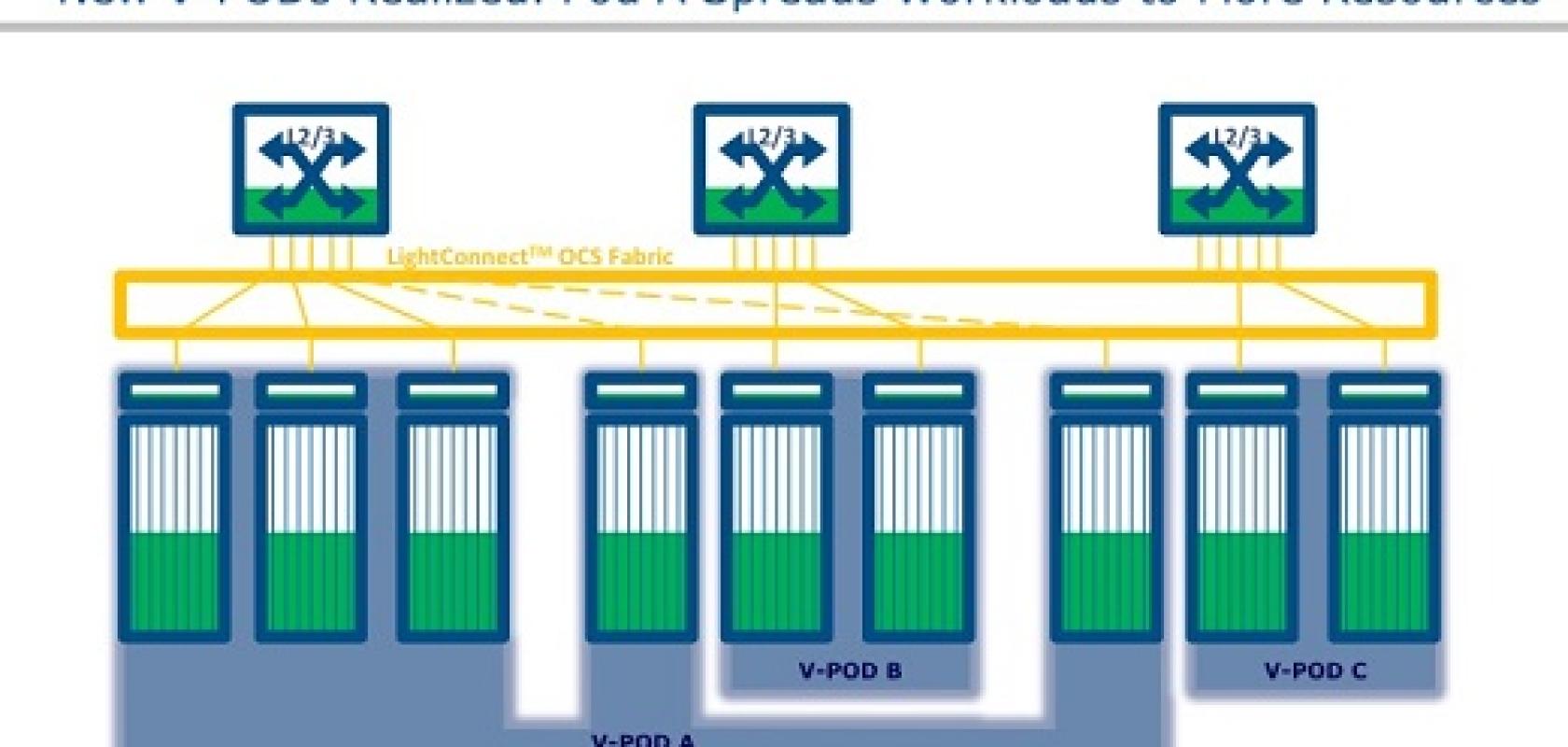The trend towards virtualisation could lead to an expanded role for optical switches inside data centres, according to Calient Technologies.
The optical circuit switch developer is proposing a new data centre architecture that would allow data centre operators use server and storage resources more efficiently – if they are prepared to buy some optical switches.
Calient says that as much as 80 per cent of server and switching resources inside data centres are underutilised, even though they represent 85 per cent of the capital investment in electronic equipment. A small increase in resource utilisation could translate into significant captial expenditure savings. Specifically, an improvement of just 1.6 per cent in resource utilisation would pay for the optical circuit switches, the company claims.
The architecture is aimed at ‘pod’-based data centres, as popularised by Google, Facebook, and others, which are built using an easily replicated, modular structure that includes compute, storage and networking functionality inside each unit. These pods allow very large data centres to scale easily, letting additional computing resources to be brought online as required.
A switch fabric located between the network switches and server racks in pods would allow those resources to be reallocated, says Calient. When the computing resource inside one pod has maxed out, additional server racks can be connected to share the workload via the optical switch fabric. Even though the resources are physically located in other pods, they will still behave as part of a tightly integrated resource within a single domain.
“We call it LightConnect. It’s a whole bunch of optical circuit switches working together to support a new concept that we’re calling the virtual pod,” said Daniel Tardent, vice president of marketing at Calient.
The upshot is a dramatic improvement in data centre resource utilisation that, in a web-scale data centre, could represent a saving of hundreds of millions of dollars in capital expenditure, the company believes.
“Instead of designing the data centre pods for the peak worst-case demand, now you can reallocate resources, so you can design them for the average worst-case demand,” Tardent explained.
It is only possible do implement this kind of architecture with a pure optical connections, he says. It’s can’t be done with Layer 2/Layer 3 switching because the response time is too slow – several microseconds every time a hop is made.
The LightConnect optical switch fabric is based on Calient’s existing product family of S-Series optical circuit switches. The new piece is the LightConnect Fabric Manager software, which maintains a complete view of the data centre topology and connectivity at the optical layer. Calient says the software can be deployed as a standalone controller or alternatively it can be integrated into the existing data centre resource management systems.
The LightManager concept could be the generalisation of an idea that is being exploited by Calient’s main customer, an unnamed webscale operator that drives a significant part of its business, according to Tardent. The vendor is clearly looking to replicate this success with other data centre service providers – while also broadening its customer base.
Tardent says potential customers are currently assessing how they might use the technology. “Our customers are interested in proof-of-concept type deployments and how they can interface our system with the existing resource manager. Live deployments will be constrained by the time it takes to design and integrate the architecture into the data centre situation,” he explained.
Calient's LightConnect Fabric Manager will be generally available in the second quarter of 2015.


